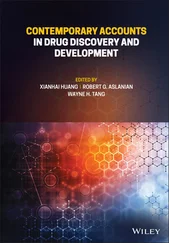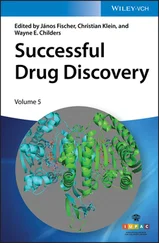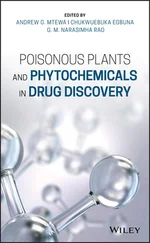Genome Editing in Drug Discovery
Здесь есть возможность читать онлайн «Genome Editing in Drug Discovery» — ознакомительный отрывок электронной книги совершенно бесплатно, а после прочтения отрывка купить полную версию. В некоторых случаях можно слушать аудио, скачать через торрент в формате fb2 и присутствует краткое содержание. Жанр: unrecognised, на английском языке. Описание произведения, (предисловие) а так же отзывы посетителей доступны на портале библиотеки ЛибКат.
- Название:Genome Editing in Drug Discovery
- Автор:
- Жанр:
- Год:неизвестен
- ISBN:нет данных
- Рейтинг книги:5 / 5. Голосов: 1
-
Избранное:Добавить в избранное
- Отзывы:
-
Ваша оценка:
- 100
- 1
- 2
- 3
- 4
- 5
Genome Editing in Drug Discovery: краткое содержание, описание и аннотация
Предлагаем к чтению аннотацию, описание, краткое содержание или предисловие (зависит от того, что написал сам автор книги «Genome Editing in Drug Discovery»). Если вы не нашли необходимую информацию о книге — напишите в комментариях, мы постараемся отыскать её.
A practical guide for researchers and professionals applying genome editing techniques to drug discovery Genome Editing in Drug Discovery,
Genome Editing in Drug Discovery
Genome Editing in Drug Discovery
Genome Editing in Drug Discovery — читать онлайн ознакомительный отрывок
Ниже представлен текст книги, разбитый по страницам. Система сохранения места последней прочитанной страницы, позволяет с удобством читать онлайн бесплатно книгу «Genome Editing in Drug Discovery», без необходимости каждый раз заново искать на чём Вы остановились. Поставьте закладку, и сможете в любой момент перейти на страницу, на которой закончили чтение.
Интервал:
Закладка:
CRISPR is widely applied to create cellular and animal models of disease, both for the identification of new drug targets and for understanding the efficacy of new drug candidates within a discovery program (Lundin et al. 2020). CRISPR is used to create specific mutations in genes to understand the effect of that mutation on gene function and to introduce molecular tags into genes to track gene expression. The latter approach has been widely adapted to characterize the efficacy of Proteolysis Targeting Chimeras (PROTACs) drugs. PROTACs are a recently discovered class of small‐molecule drugs that rather than inhibiting the function of a drug target, act to degrade the target protein. To understand the efficacy of PROTAC drugs in cellular models of disease, the drug target is typically tagged with a short protein sequence that enables the creation of assays that allow PROTAC‐mediated degradation of the target to be followed in real time in an immortalized cell line or animal model of disease. CRISPR has revolutionized the ability to generate transgenic animal models of disease, both reducing the timelines and number of animals required for the creation of an animal model through the ability to highly efficiently edit the genome of the single cell embryo, while again enabling the creation of complex models of disease not previously possible.
CRISPR is being widely applied in the field of CAR‐T cell therapy both to enable precise insertion of the CAR, but also to identify and delete other T‐cell genes to enable improved efficacy of the cell product (Liu et al. 2017). There is also huge interest in the potential of CRISPR as a medicine in its own right to correct gene mutations in rare and perhaps common diseases and a number of biotechnology companies have been established to bring CRISPR medicines to the clinic, including Editas, CRISPR Therapeutics, Beam Therapeutics, Verve Therapeutics and Intellia. The first clinical studies of medicines to treat β‐thalassemia and Sickle Cell Disease started in 2019 with highly promising results in the first patients, with the first in‐vivo gene editing clinical trials in diseases such as Transthyretin amylodosis in which CRISPR is being used to delete genes in the patient liver, due to start in 2022. Many further projects are in discovery to develop treatments for a range of diseases including α1‐antitrypsin deficiency and Cystic Fibrosis.
Last and perhaps one of the most exciting applications of CRISPR in drug discovery is the potential to create highly sensitive, inexpensive, point‐of‐care diagnostics for the early detection of disease (Chen et al. 2018; Gootenberg et al. 2018; Myhrvold et al. 2018). It is widely accepted, particularly in Oncology, that the probability of patient survival from the disease increases with early disease detection. The creation of diagnostics that detect cancer in stage 1 rather than when symptomatic in stage 3 or 4 will transform our ability to treat and perhaps cure this disease. Two methods have been published, described as SHERLOCK and DETECTR, that offer the potential to create such sensitive DNA diagnostics. While in early development, the potential of these innovations is huge and are being applied more broadly, including for the creation of a diagnostic test for the SARS‐CoV2 virus.
1.5 Concluding Comments
Since the demonstration of the ability of CRISPR/Cas systems to precisely and efficiently edit gene sequences in 2012, CRISPR has become embedded as a routine technique in molecular and cell biology laboratories across the field. New industries have been created to supply CRISPR reagents and CRISPR‐edited cell and animal models to the research scientist, to develop CRISPR medicines and to create CRISPR diagnostics. The applications and impact of CRISPR in drug discovery are discussed at length within this book. Within eight short years, CRISPR has transformed our ability to identify and characterize the role of new drug targets in disease and to create the cell and animal models integral to identify and optimize drug candidates. With the rate of innovation in this field, we can look forward to the development of novel CRISPR systems that increase the efficiency and specificity of gene editing, to the development of transformative CRISPR therapies with the potential to cure severe genetic diseases and to the invention of highly sensitive diagnostics for the early identification and subsequent cure of many common diseases. As we move through the coming decades, the opportunity for CRISPR to improve human health remains enormous.
References
1 Acharya, S., Mishra, A., Paul, D. et al. (2019). Francisella novicida Cas9 interrogates genomic DNA with very high specificity and can be used for mammalian genome editing. Proc. Natl. Acad. Sci. U. S. A. 116: 20959–20968.
2 Anzalone, A.V., Randolph, P.B., Davis, J.R. et al. (2019). Search‐and‐replace genome editing without double‐strand breaks or donor DNA. Nature 576: 149–157.
3 Batta, A., Kalra, B.S., and Khirasaria, R. (2020). Trends in FDA drug approvals over last 2 decades: an observational study. J Family Med Prim Care 9: 105–114.
4 Behan, F.M., Iorio, F., Picco, G. et al. (2019). Prioritization of cancer therapeutic targets using CRISPR‐Cas9 screens. Nature 568: 511–516.
5 Bibikova, M., Carroll, D., Segal, D.J. et al. (2001). Stimulation of homologous recombination through targeted cleavage by chimeric nucleases. Mol. Cell Biol. 21: 289–297.
6 Boch, J., Scholze, H., Schornack, S. et al. (2009). Breaking the code of DNA binding specificity of TAL‐type III effectors. Science 326: 1509–1512.
7 Chen, J.S., Ma, E., Harrington, L.B. et al. (2018). CRISPR‐Cas12a target binding unleashes indiscriminate single‐stranded DNase activity. Science 360: 436–439.
8 Cong, L., Ran, F.A., Cox, D. et al. (2013). Multiplex genome engineering using CRISPR/Cas systems. Science 339: 819–823.
9 Cui, Y., Cheng, X., Chen, Q. et al. (2021). CRISP‐view: a database of functional genetic screens spanning multiple phenotypes. Nucleic. Acids. Res. 49 (D1): D848–D854.
10 Doench, J.G. (2018). Am I ready for CRISPR? A user's guide to genetic screens. Nat. Rev. Genet. 19: 67–80.
11 Fellmann, C., Gowen, B.G., Lin, P.C. et al. (2017). Cornerstones of CRISPR‐Cas in drug discovery and therapy. Nat. Rev. Drug Discov. 16: 89–100.
12 Gilbert, L.A., Horlbeck, M.A., Adamson, B. et al. (2014). Genome‐scale CRISPR‐mediated control of gene repression and activation. Cell 159: 647–661.
13 Gootenberg, J.S., Abudayyeh, O.O., Kellner, M.J. et al. (2018). Multiplexed and portable nucleic acid detection platform with Cas13, Cas12a, and Csm6. Science 360: 439–444.
14 Jinek, M., Chylinski, K., Fonfara, I. et al. (2012). A programmable dual‐RNA‐guided DNA endonuclease in adaptive bacterial immunity. Science 337: 816–821.
15 Kampmann, M. (2018). CRISPRi and CRISPRa Screens in Mammalian Cells for Precision Biology and Medicine. ACS Chem. Biol. 13: 406–416.
16 Kim, Y.G., Cha, J., and Chandrasegaran, S. (1996). Hybrid restriction enzymes: zinc finger fusions to Fok I cleavage domain. Proc. Natl. Acad. Sci. U. S. A. 93: 1156–1160.
17 Lancaster, M.A., Renner, M., Martin, C.A. et al. (2013). Cerebral organoids model human brain development and microcephaly. Nature 501: 373–379.
18 Liu, X., Zhang, Y., Cheng, C. et al. (2017). CRISPR‐Cas9‐mediated multiplex gene editing in CAR‐T cells. Cell Res. 27: 154–157.
19 Lundin, A., Porritt, M.J., Jaiswal, H. et al. (2020). Development of an ObLiGaRe Doxycycline Inducible Cas9 system for pre‐clinical cancer drug discovery. Nat. Commun. 11: 4903.
20 Mali, P., Yang, L., Esvelt, K.M. et al. (2013). RNA‐guided human genome engineering via Cas9. Science 339: 823–826.
Читать дальшеИнтервал:
Закладка:
Похожие книги на «Genome Editing in Drug Discovery»
Представляем Вашему вниманию похожие книги на «Genome Editing in Drug Discovery» списком для выбора. Мы отобрали схожую по названию и смыслу литературу в надежде предоставить читателям больше вариантов отыскать новые, интересные, ещё непрочитанные произведения.
Обсуждение, отзывы о книге «Genome Editing in Drug Discovery» и просто собственные мнения читателей. Оставьте ваши комментарии, напишите, что Вы думаете о произведении, его смысле или главных героях. Укажите что конкретно понравилось, а что нет, и почему Вы так считаете.












